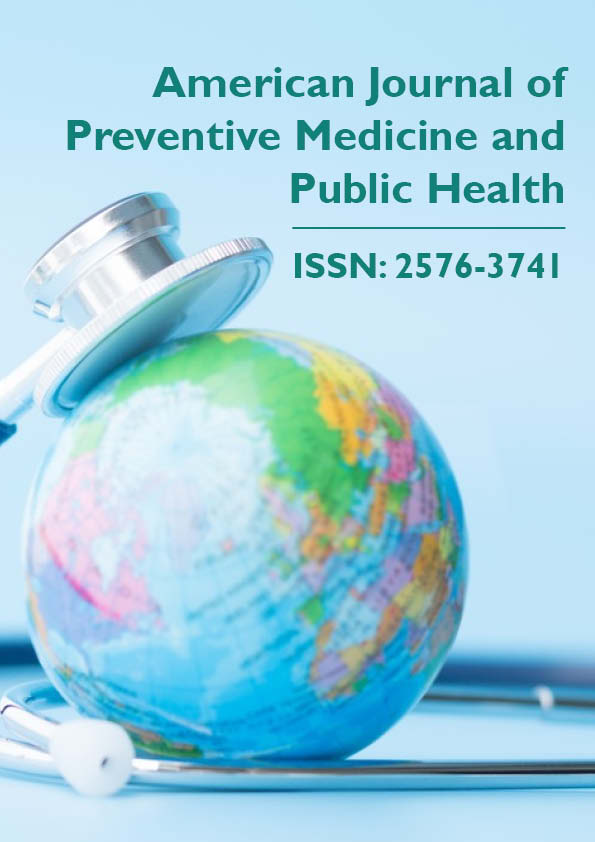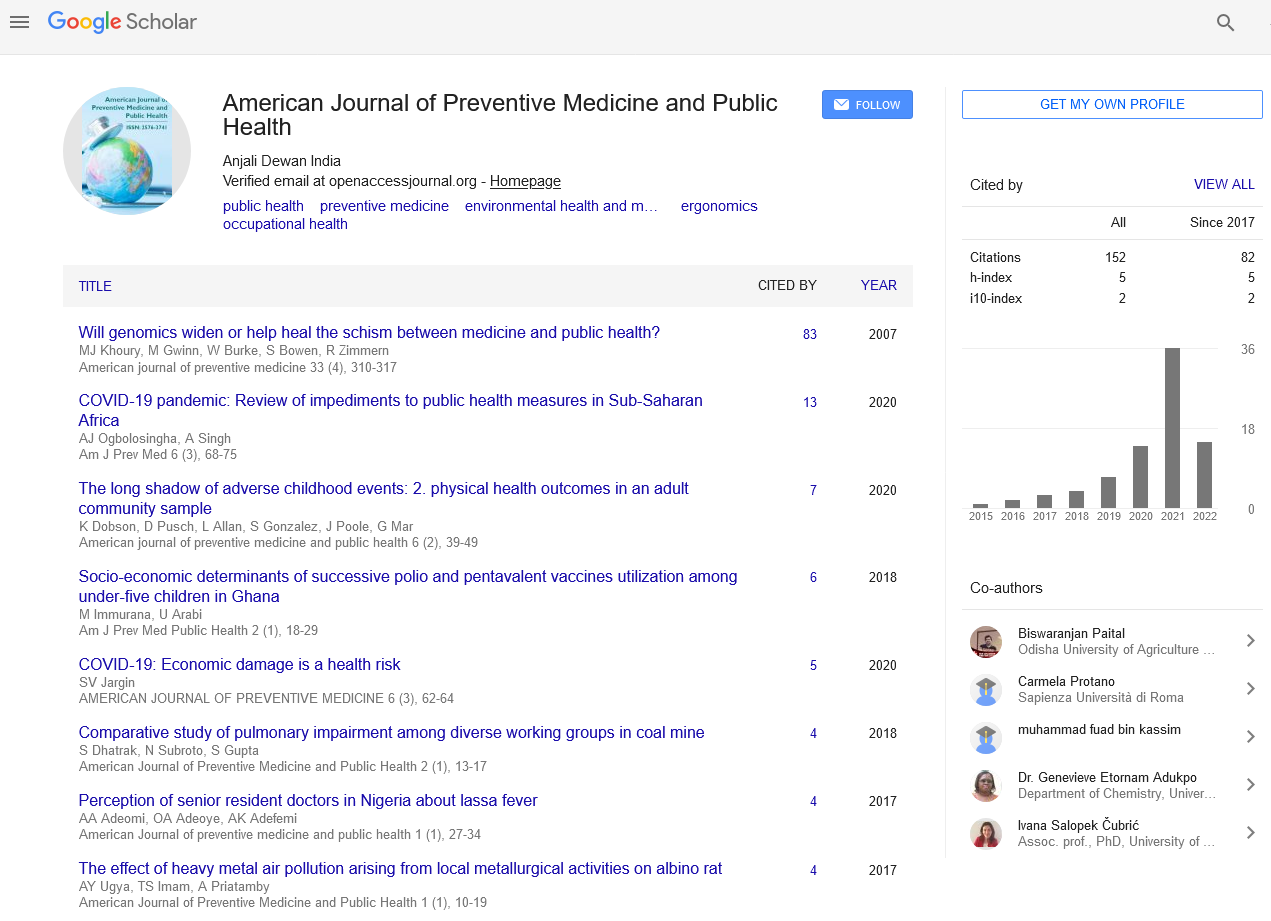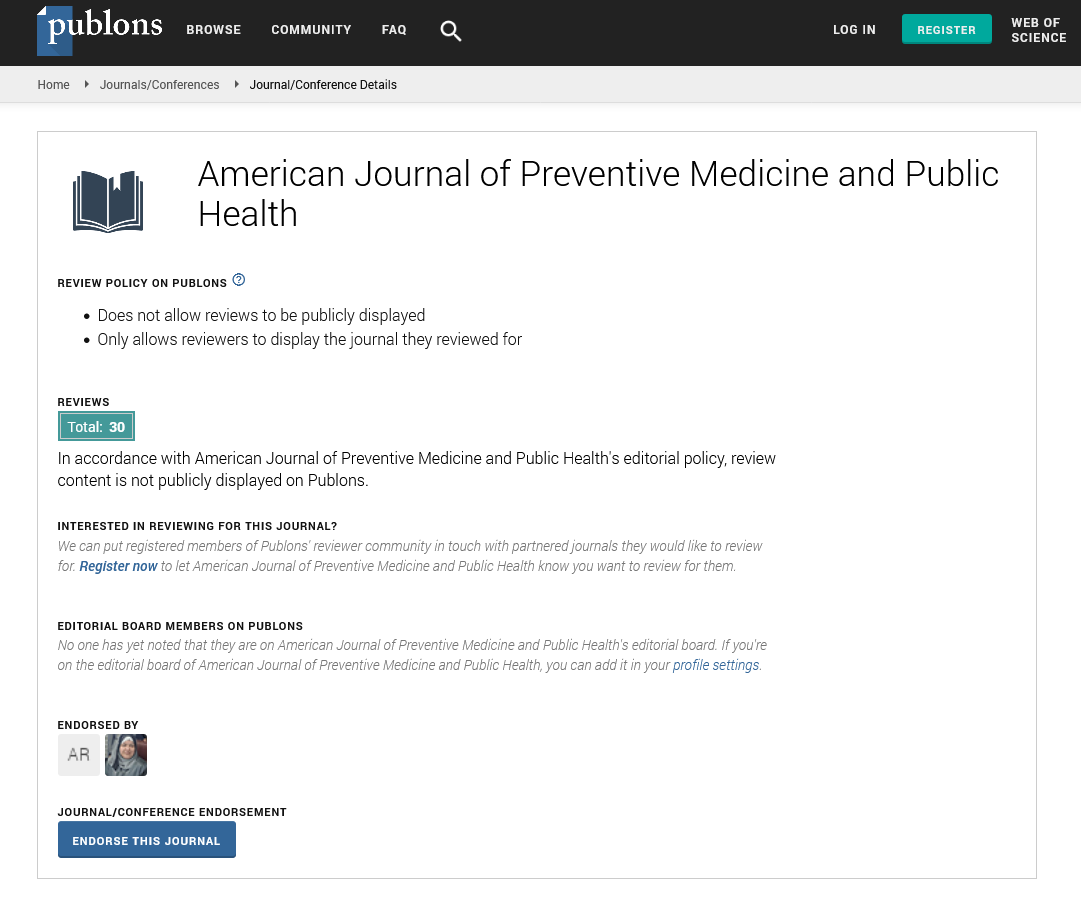Perspective - American Journal of Preventive Medicine and Public Health (2022)
Epidemiological Characteristics of the COVID-19 Outbreak in Health Care Systems
Michael Gottlieb*Michael Gottlieb, Department of Experimental Medicine, University of Tor Vergata, Rome, Italy, Email: gottliebmichal01@yhoo.com
Received: 10-Nov-2022, Manuscript No. AJPMPH-22-83033; Editor assigned: 14-Nov-2022, Pre QC No. AJPMPH-22-83033(PQ); Reviewed: 30-Nov-2022, QC No. AJPMPH-22-83033; Revised: 05-Dec-2022, Manuscript No. AJPMPH-22-83033(R); Published: 12-Dec-2022
Description
Austria’s first confirmed COVID-19 case occurred at the end of February 2020 in Ischgl, a Tyrolean tourist destination visited by travellers from all over the world, along with one of Europe’s first super spread events. Did. The first half of March 2020 saw an exponential increase in confirmed cases as the virus spread across the country. These developments are dramatic in neighbouring Italy, where the number of cases continued to rise despite stringent Non-Pharmaceutical Interventions (NPI), hospital capacity was exceeded, and the military had to assist health authorities. A forecasting consortium was formed in mid-March, commissioned by the government, to understand the extent to which a similar development could occur in Austria. Weekly forecasts of deployments and the impact of these deployments on healthcare demand were made. The overriding political goal at this stage was to survive the crisis without straining the Austrian healthcare system. During the summer, this was also enshrined in law in the article of the Austrian COVID-19 law, where a home ban could only be implemented if the health system’s capacity was threatened to be exhausted. Epidemiological risk assessment The Austrian Corona Commission, an advisory body to the Minister of Health responsible for, defined intensive care units as being able to cope with situations where up to 33% of all intensive care beds are occupied by COVID-19 patients. Austria implemented a number of Non-Pharmaceutical Interventions (NPIs) in response to the first wave of crisis. Airport restrictions and landing bans were tightened in the first week of March, along with expanded healthcare and public health capacities. Gatherings were limited to 500 people and cultural and other events were canceled from March 10. On March 16, Austria went into full lockdown, with schools, bars, restaurants and shops closed and all non-essential employees moving to work from home. These NPIs, together with other previous measures, effectively reduced the number of daily infections rapidly. The number of new infections per day reached its first peak on March 26 with 1,065. In the first wave, COVID-19-related hospital admissions peaked at 912 beds on March 31, ICU occupancy peaked at 267 beds (about 10% of total capacity) on April 8, COVID-19 cases have peaked. New infections per day he declined in April and then fluctuated below 100 until July.
From July 2020, the number of cases in Austria increased again, with a second wave occurring in October. In response to this rising number of cases, the Austrian government has introduced a series of lockdowns of varying severity since the beginning of November 2020. Hospitalizations peaked for him at the end of November, with 3,985 occupied regular beds on 24 November and 709 occupied intensive care beds on 25 November. According to officially reported data, this peak brought Austrian hospitals very close to the limit of 33% of his ICU bed occupancy by COVID patients.
Her COVID-19 Forecasting Consortium in Austria has produced weekly short-term forecasts on the number of cases and hospital beds needed. Specifically, the role of the prediction consortium was to predict the probability of crossing the threshold of 33% of ICU beds occupied by COVID-19 patients within the prediction period. Our consortium consisted of three independent modelling teams with experience in using and developing mathematical and computational models to address epidemiological and public health issues. The consortium was supplemented in weekly meetings by experts from the Federal Ministry of Health, the Austrian Health and Food Safety Agency and external public health experts.
The SARS-CoV-2 pandemic has spurred the explosive growth of epidemiological predictive models, but little research has been done on how the results of such models should be disseminated for decision support. It is not this paper therefore presents a forecasting and reporting system developed based on three independent forecasting models to support policy-making in Austria. Each model is adapted from existing work, but our main novelty is the development of a reporting system for communicating relevant findings to non-technical experts and for making decisions about strengthening or mitigating NPIs in development.
After briefly summarizing each model and the strategies for combining their results, we discuss the accuracy of the predictions and how this accuracy varies during the stages of the epidemic (i.e., high or low incidence stages, between waves, etc.). The combined forecast is consistently found to be more accurate than the individual forecasts for the three different combination strategies. Significant overestimation or underestimation of actual development usually occurred simultaneously in all models, sometimes marking an epidemiological tipping point.
Copyright: © 2022 The Authors. This is an open access article under the terms of the Creative Commons Attribution Non Commercial Share Alike 4.0 (https://creativecommons.org/licenses/by-nc-sa/4.0/). This is an open access article distributed under the terms of the Creative Commons Attribution License, which permits unrestricted use, distribution, and reproduction in any medium, provided the original work is properly cited.







